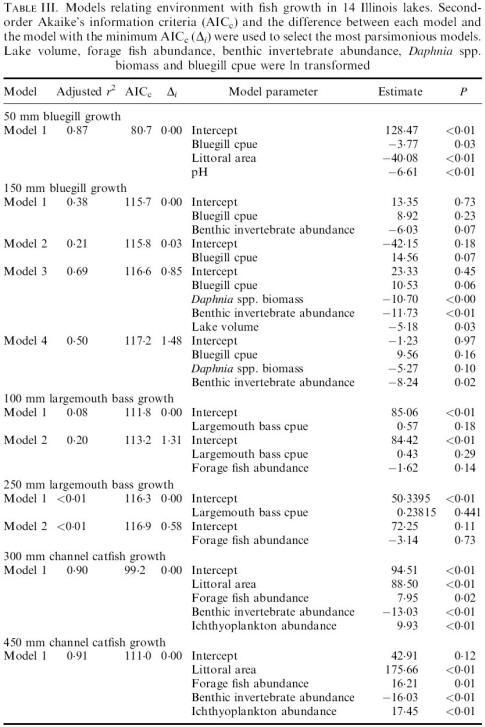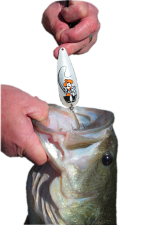Growth of bluegill, largemouth bass, and channel catfish in relation to prey availability and limnological conditions
Project personnel: Dan Shoup, Sean Callahan, Dave Wahl
Shoup, D.E., Callahan, S.P.*, Wahl, D.H., and Pierce, C.L. 2007. Growth of Bluegill, Largemouth Bass, and Channel Catfish in Relation to Prey Availability and Limnological Variables in Illinois Reservoirs. Journal of Fish Biology 70:21-34.

Growth of sympatric populations of three important sport fish species: bluegill Lepomis macrochirus, largemouth bass Micropterus salmoides and channel catfish Ictalurus punctatus, in 14 Illinois reservoirs was assessed in an attempt to relate size-specific growth to environmental conditions. Multiple regression relationships for most species and size classes explained a large percentage of the variation in growth. Growth of small bluegill (50 mm total length, TL) showed a strong negative relationship with bluegill catch per unit effort (cpue), per cent littoral area and pH. Large bluegill (150 mm TL) growth was negatively related to Daphnia spp. and benthic macroinvertebrate abundance and lake volume, and positively related to bluegill cpue. Growth of small (100 mm TL) and large (250 mm TL) largemouth bass was not well explained by any of the measured variables. Growth of both small (300 mm TL) and large (450 mm TL) channel catfish was strongly positively related to forage fishes and ichthyoplankton abundance, and per cent littoral area while negatively related to benthic macroinvertebrates. By identifying environmental conditions associated with increased growth rates, these models provide direction for managing fish populations and suggest testable hypotheses for future study of the complex interactions between environmental conditions and growth.



